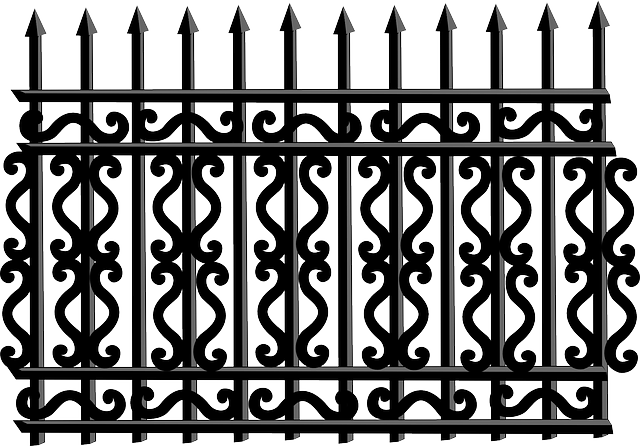In New Bedford, Massachusetts, installing a fence can enhance your property’s value and security. This comprehensive guide equips homeowners with the knowledge to undertake this project successfully. We explore various fence options tailored to New Bedford yards, offering a step-by-step planning process from measurement to permit acquisition. Essential tools, materials, and construction techniques are detailed for a DIY triumph. Additionally, we provide final touches and maintenance tips to ensure your new fence thrives.
- Understanding Your Fence Options for New Bedford Yards
- Measuring and Planning: A Step-by-Step Guide
- Acquiring Necessary Permits for Installation
- Tools and Materials Required for DIY Success
- Constructing Your Fence: Techniques and Tips
- Final Touches and Maintenance Tips for Longevity
Understanding Your Fence Options for New Bedford Yards
When it comes to fencing your New Bedford, Massachusetts yard, there are several options to consider. The first step is understanding the types of fences available and which one aligns best with your needs and preferences. Wood fences are a popular choice for their natural aesthetic appeal and ability to blend seamlessly with outdoor spaces. However, they require regular maintenance like painting or staining. Vinyl fences offer low-maintenance benefits, durability, and come in various styles and colors, making them versatile and attractive options. Chain link fences, ideal for security purposes, are also suitable for backyards, offering both privacy and safety without obstructing the view. Each type has unique advantages and considerations, from material costs to installation complexity, so evaluating your priorities will guide you in making an informed decision.
Measuring and Planning: A Step-by-Step Guide
Before you start installing your fence, careful measurement and planning are crucial steps to ensure a successful DIY project. Begin by identifying the perimeter of the area where you want the fence to go. Use string or chalk to mark out the boundary, ensuring it aligns with any existing structures, trees, or landscape features.
Next, determine the type of fence that best suits your needs and New Bedford’s local regulations. Consider factors like height, material (wood, vinyl, or chain-link), and style (privacy, picket, or post and rail). Once you’ve made your selection, gather the necessary tools and materials. You’ll need a tape measure, level, post-hole digger, lumber (or pre-fabricated fence panels), posts, brackets, concrete mix, and any hardware specific to your chosen fence type.
Acquiring Necessary Permits for Installation
Before beginning any fence installation project in New Bedford, Massachusetts, homeowners must ensure they comply with local regulations and obtain the necessary permits. The process typically involves contacting the local building department to inquire about specific requirements for fence construction. This step is crucial as it ensures your project aligns with safety standards and zoning ordinances.
Permits are often required for fence installation to secure structural integrity, privacy, and aesthetic considerations. Homeowners should be prepared to provide details about their property lines, proposed fence materials, height, and design. Once approved, these permits guarantee that your new fence installation adheres to the city’s guidelines, ensuring a smooth construction process and avoiding any legal issues.
Tools and Materials Required for DIY Success
When tackling a DIY fence installation project in New Bedford, Massachusetts, having the right tools and materials is paramount to ensuring a successful outcome. For most residential fences, you’ll need a variety of basic tools including a measuring tape, post hole digger or shovel, hammer or power drill with a concrete bit, level, string line, and a selection of fence posts, brackets, and rails specific to your fence style. Don’t forget safety gear like work gloves and eye protection. Materials will vary based on the type of fence you choose—wood, vinyl, or chain link—but commonly include posts, panels (for wood or vinyl), wire mesh (for chain link), tension bands (for metal fences), and finishings like caps or post tops. A good supply store or hardware retailer can guide you in selecting the best options for your project.
Constructing Your Fence: Techniques and Tips
When constructing your fence, start by creating a solid foundation. Dig deep enough to accommodate posts, ensuring they’re firmly anchored in stable soil. This step is crucial for preventing post tipping and rot. Use concrete to set the posts, allowing it to cure fully before proceeding.
Choose the right materials based on your climate and intended use. For New Bedford’s conditions, durable vinyl or treated wood might be best. Consider fencing styles that complement your home’s architecture, from classic picket fences to modern vertical slat designs. Regularly inspect your fence for loose boards or damaged posts, repairing or replacing them promptly to maintain its structural integrity and aesthetic appeal.
Final Touches and Maintenance Tips for Longevity
Once your fence is installed, it’s time to focus on final touches and regular maintenance to ensure longevity. Start by ensuring all hardware is securely fastened and any gates or hinges are properly aligned. Apply a coat of high-quality sealant or paint to protect the fence from the elements, especially if you’ve chosen a wood fence. This simple step can significantly extend the life of your fence.
Regular cleaning and inspection are crucial. Remove any debris, such as leaves or branches, that may accumulate on the fence. Check for signs of rot, rust, or damage, addressing these issues promptly. Use appropriate tools and materials for repairs to maintain the fence’s structural integrity. Lastly, consider a yearly deep clean and treatment to keep your fence looking its best and protect it from environmental wear.
